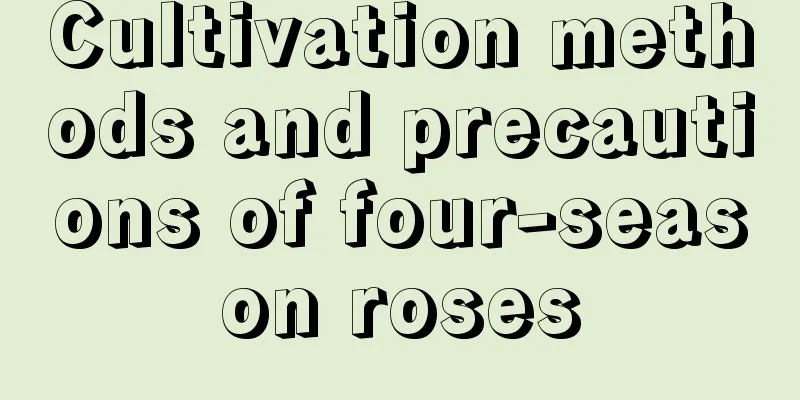Cultivation methods and precautions of Dieffenbachia

soilThe cultivation soil for Dieffenbachia can be a mixture of humus, leaf mold, sandy soil, slag and fertilizer. All five types of soil materials must be prepared in advance. After being exposed to strong sunlight, they can be finely sieved and set aside. FertilizationThe leaves of variegated dieffenbachia are thick and emerald green. They need to be fertilized once every 15 days. After they are cultivated normally outside in spring, top dressing should be done once every 7 days or so. Stop applying fertilizer before flowering, and apply plenty of fertilizer after fruiting. Apply fertilizer frequently to make the fruits grow fuller. WateringVariegated Dieffenbachia likes moisture but is afraid of waterlogging, so do not water it too much, otherwise the roots will easily rot. Water once every 2 to 3 days. It is best to put a water tray under the flowerpot of Dieffenbachia so that water can penetrate the soil from the small holes, which can keep the soil moist. Temperature requirementsVariegated Dieffenbachia has strong vitality and can survive in all parts of the north and south. The best temperature is 20-30 ℃ , and in winter it must be around 7 ℃ to ensure its safety. Lighting requirementsVariegated Dieffenbachia likes to grow in moist soil and also likes to grow in an environment with low light. In summer, it should be placed in a sunny place. As an ornamental flower at home, it can be placed under the balcony to avoid strong sunlight. How to trimWannian should be pruned in time and completed before the beginning of summer. When pruning, check the front and back and remove any leaves that are old, insect-damaged, or cracked. In spring, the useless and old leaves of Dieffenbachia should be cut off to concentrate nutrients, allowing the plant to sprout new buds and differentiate flower buds. Seedling pruning is an important task, otherwise it will be difficult for the plants to bloom. PrecautionsVariegated Dieffenbachia is a flower that likes warm and humid conditions, is shade-tolerant, and is afraid of cold. In summer, it needs to be cultivated outdoors and a shed needs to be built to block out the sunlight. When exposed to sunlight, the leaves tend to turn green and white, and the edges of the leaves tend to burn. Apply fertilizer appropriately to the variegated dieffenbachia, do not apply fertilizer in winter, and place it in a well-lit place when growing it indoors. Most of the variegated dieffenbachia plants grown in the open field can bloom and bear fruit. However, the variegated dieffenbachia cannot be exposed to rain during its flowering period. |
>>: How to choose saffron bulbs
Recommend
How to maintain the lucky tree bonsai and what to pay attention to
Feng Shui meaning of lucky tree bonsai The lucky ...
The growing environment and local conditions of cherries
Cherry growth environment and conditions Cherries...
Ten miles of locust flowers, they are fragrant and sweet when you take a bite, so delicious that you will lick the plate!
Let’s first talk about what locust flowers are ed...
Rose cultivation methods and precautions
1. Breeding methods 1. Flower pot: When choosing ...
What should be paid attention to when fertilizing roses (what fertilizers to apply at different stages of roses)
Fertilizing roses is a science. Many people think...
Cultivation method of red scale syzygium
Growth habit The red-scaled syzygium usually grow...
Is the Ixora dropping leaves at home? After learning these four tricks, all problems will be solved!
1. What to do if the leaves of the Immortelle flo...
How to care for chrysanthemums? How many years can chrysanthemums be grown?
1. How to maintain 1. Soil preparation: If you wa...
How to care for hydroponic silver queen
Silver Queen hydroponic method Silver Queen can b...
Cultivation methods and precautions of lotus orchid
Lotus orchid is not very difficult to grow. The p...
How to plant perilla seeds and when to plant perilla leaf seeds
Perilla seeds are usually sown around March , and...
Cultivation methods and precautions of red flower jade
The red jade cactus is relatively easy to grow am...
How to loosen the soil for flowers
How deep should the soil be loosened? This issue ...
What should I do if Huayuejin has no more jin?
The reason why Huayuejin has no brocade When novi...
What are the five grains? What do rice, millet, sorghum, wheat and beans refer to?
1. What is The five grains are wheat, rice, soybe...









